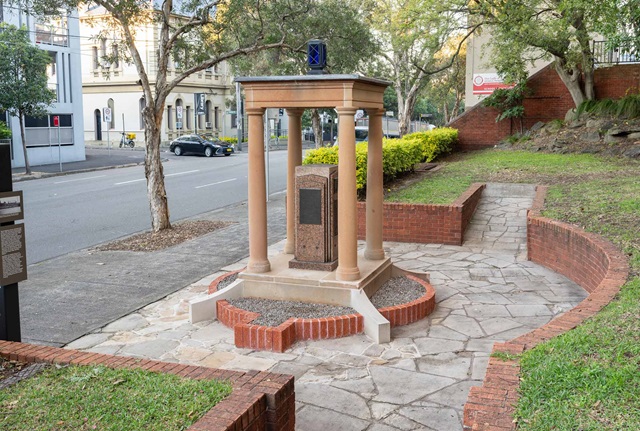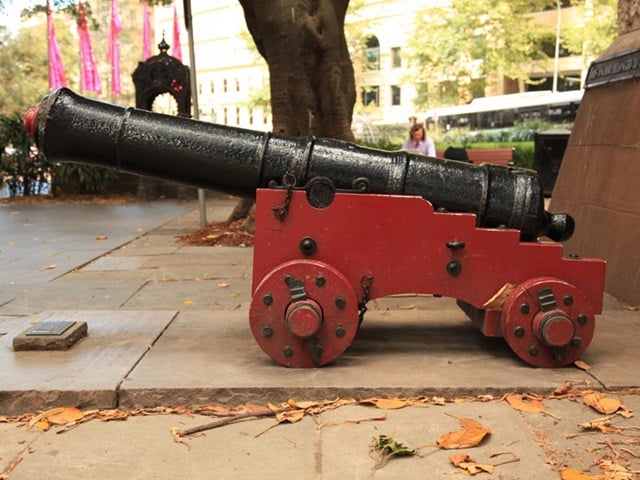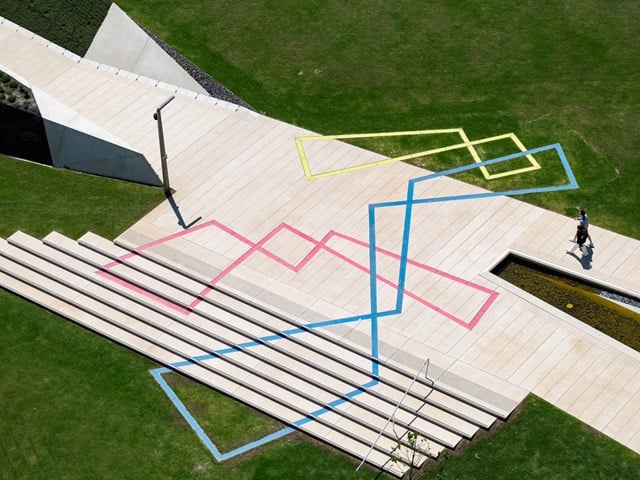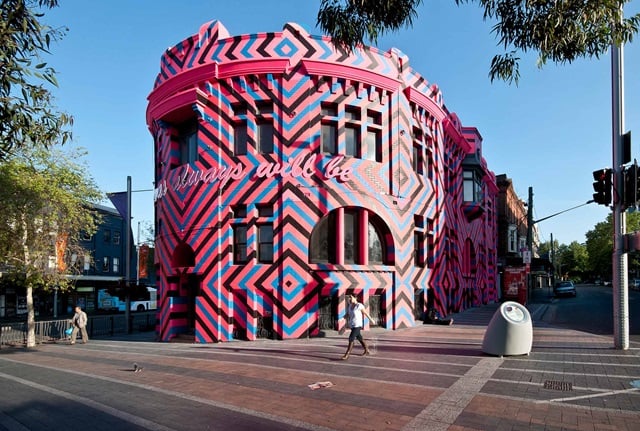


Simple granite World War 2 memorial, set within a peaceful reserve in the busy heart of Waterloo.
Artwork description
At the busy junction of Elizabeth and Kellick streets in the heart of Waterloo, the Tobruk Reserve is nestled – a tiny place of peace and reflection.
In the centre of the reserve, surrounded by landscaped gardens, stands the Waterloo World War 2 Memorial.
This red granite memorial pillar stands on a simple square plinth set into a circular stone base. It is protected by a corniced sandstone roof supported by 4 sandstone columns. The pillar is adorned on 2 sides by granite and sandstone vases.
Artist
Frederick Arnold and his sons were master monumental sculptors and masons.
Arnold opened a monument masonry works in 1879 on the corner of Wellington and Regent streets, Sydney.
In 1892 the works were moved to Paddington and by 1918 the firm had relocated to 53 Regent Street, Sydney.
Records in the Mitchell Library show the business traded until 1981.
Inscription
Copper plaques are fixed to 3 sides of the memorial pillar, listing the names of soldiers lost between 1939 and 1945. On the front face of the pillar is another plaque, with the following inscription:
A plaque on the memorial’s base shows that it was ‘Erected by the Council of the Municipality of Waterloo, M.V. Neilson, Mayor 1947’. A partially obscured inscription on the plinth names the sculptor as F. Arnold.







